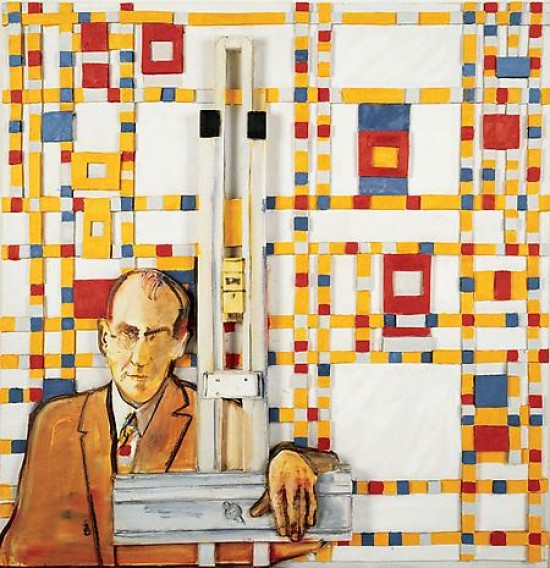
Larry Rivers, “Art and the Artist: Mondrian,” oil on canvas mounted on sculpted foamboard, 1992 (courtesy Tibor de Nagy Gallery)
Tibor de Nagy Gallery
724 Fifth Ave. between 56th & 57th Sts.
Tuesday – Friday through June 15, free, 10:00 am – 6:00 pm
212-262-5050
www.tibordenagy.com
Born Yitzroch Loiza Grossberg in the Bronx in 1923, multidisciplinary artist and jazz saxophonist Larry Rivers, who died ten years ago at the age of seventy-eight, was a key influential figure in the ever-changing world of twentieth-century art, impossible to pigeon-hole into any one specific category or movement. This refusal to maintain the status quo is evident in his current solo show at Tibor de Nagy, which focuses on paintings and drawings made between 1975 and 2002. “A number of things strike me about Rivers’s late work. One is its range,” writes American poet and critic John Yau in the exhibition’s hardcover catalog. “He can go from doing a self-mocking send-up of his friend, the French artist Jean Hélion, to sensitively addressing the legacy of the Holocaust. This alone convinces me that his late work needs a longer and deeper look, and that his entire oeuvre needs to be reconsidered.” Indeed, the pieces on view deal with two primary subjects: three-dimensional sculpture paintings that pay homage to other artists, and poignant drawings that address family and loss, especially in regard to World War II. What first jumps out at Tibor de Nagy are brightly colored depictions of Groucho Marx, Charlie Chaplin, Piet Mondrian, Henri Matisse, Hélion, and others at work, painted on intricately sculpted foamboard that gives added life to them without feeling gimmicky. Rivers also re-creates Matisse’s “La Danse” with a more abstract vision. Meanwhile, in the back room, such poignant color pencil drawings as “The Frank Family,” “Four Seasons: Fall in the Forest of Birkenau,” and “Erasing the Past I” and “Erasing the Past II” take on a more serious tone, the yellow stars on the subjects’ tattered clothes emerging as haunting reminders of the Holocaust. While the works might evoke a wide range of emotions, from glee and wonder to sadness and pain, they are all about one thing, a past as remembered by a truly American artist.